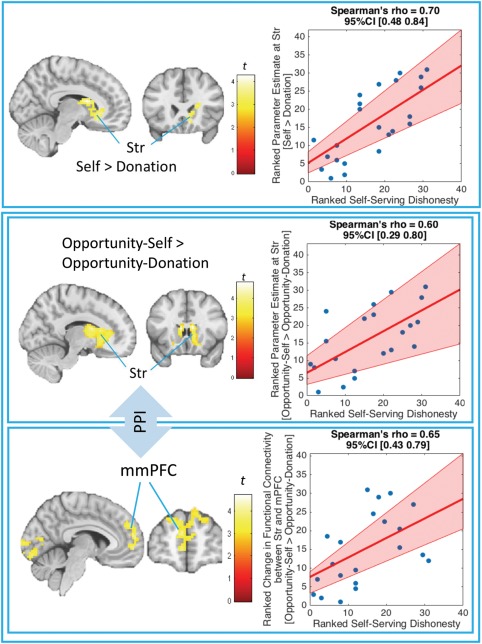Figure 4.

Neural activity of the Self vs. Donation effects as a function of ranked Self‐Serving Dishonesty. Self‐Serving Dishonesty is defined by self‐reported % accuracy during Opportunity‐Self trials minus % accuracy during Opportunity‐Donation trials. The top section shows a positive relationship between Self‐Serving Dishonesty and neural activity in the Striatum (Str) when participants evaluated the coin‐flip outcome for themselves compared with for donation [Self > Donation]. The bottom section shows that this relationship also applied to situations when people had a chance to make dis/honest decisions [Opportunity‐Self > Opportunity‐Donation]. Note that there was no significant relationship between Self‐Serving Dishonesty and neural activity in the Str when there was no chance [No‐Opportunity‐Self > No‐Opportunity‐Donation]. The bottom section also displays a positive relationship between Self‐Serving Dishonesty and the functional connectivity between the Str and middle‐medial prefrontal cortex (mmPFC). The functional‐connectivity analysis was conducted using a PPI between Opportunity‐Self and Opportunity‐Donation conditions with the dorsal part of the Str [−15 27 12] as a seed. The images were based on whole‐brain regression analyses [Cluster‐forming threshold at p <.005, cluster‐wise corrected (pFWE <.05)]. The pink shaded area in the rank‐transformed scatterplot (higher value = higher rank) represents bootstrapped 95% CIs around the linear regression line (Pernet et al., 2013) [Color figure can be viewed at http://wileyonlinelibrary.com]
